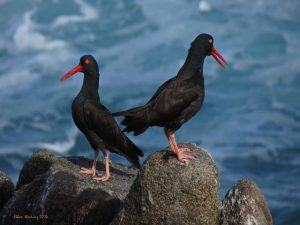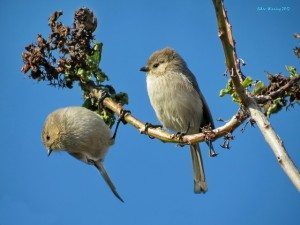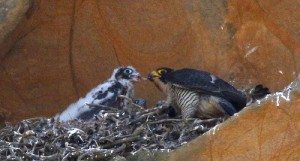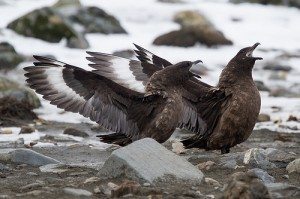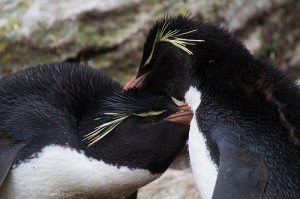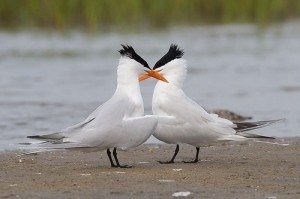Protecting birds and cats with a “catio”
By Ilana DeBare
The black cat named Totoro trained his bright yellow eyes on a Chestnut-backed Chickadee singing on a branch. The chickadee was only a few feet away. There was no windowpane between them. The cat could practically reach out and grab the bird.
The bird was safe.
Totoro was in his “catio” – an outdoor enclosure or patio designed to let house cats experience the sights and smells of the outdoor world, while keeping both birds and the cats themselves from harm.
“We have some of the happiest cats,” said Phil Price, a Golden Gate Bird Alliance board member who built the North Berkeley catio where Totoro was sitting. “They love to come out, sniff the air, sleep in the sun, and watch people walking their dogs down the street.”
The tern “catio” is so new that there’s no Wikipedia entry for it yet. It’s not listed in the Merriam-Webster dictionary.
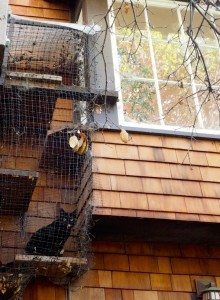 Totoro watching a chickadee / Photo by Ilana DeBare
Totoro watching a chickadee / Photo by Ilana DeBare
But the concept is catching on among cat owners who care about birds. Last fall, the Audubon Society of Portland sponsored its first Catio Tour, featuring twelve catios in the Portland, Oregon, area.
The latest scientific studies suggest that outdoor cats – both domestic and feral – kill more than 1 billion birds each year. A single domestic cat typically kills between one and 34 birds each year; one feral cat kills an estimated 23 to 46 birds annually.
Keeping cats indoors is the best way to stop them from killing birds. Keeping cats indoors also helps them stay healthy — safe from hazards like cars, dogs, and fights with other cats.
Catios, meanwhile, are a way to give indoor cats a taste of the outdoors.
Catios can be jaw-droppingly expensive and elaborate. Web sites like CatioShowcase.com feature some cat enclosures that could be mistaken for Hawaiian resorts.
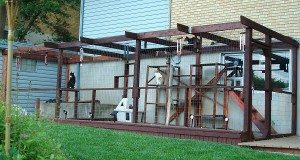 Elaborate Utah catio featured on CatioShowcase.com
Elaborate Utah catio featured on CatioShowcase.com
 Resort-like catio in Florida featured on CatioShowcase.com
Resort-like catio in Florida featured on CatioShowcase.com
But catios can also be inexpensive and homemade. That’s the case with Phil Price and Juliet Lamont’s Berkeley cat complex.
Price started out in the late 1990s by building a cage out of plastic PVC pipe and wire mesh on the roof of his garage, accessible through a cat door that he cut in a wall. He installed some potted plants and a cat climbing structure.
Then in 2003, he added an outdoor catwalk – a long wooden plank framed by PVC pipe and wire that stretches from his garage roof to the home of his sister-in-law next door.…



